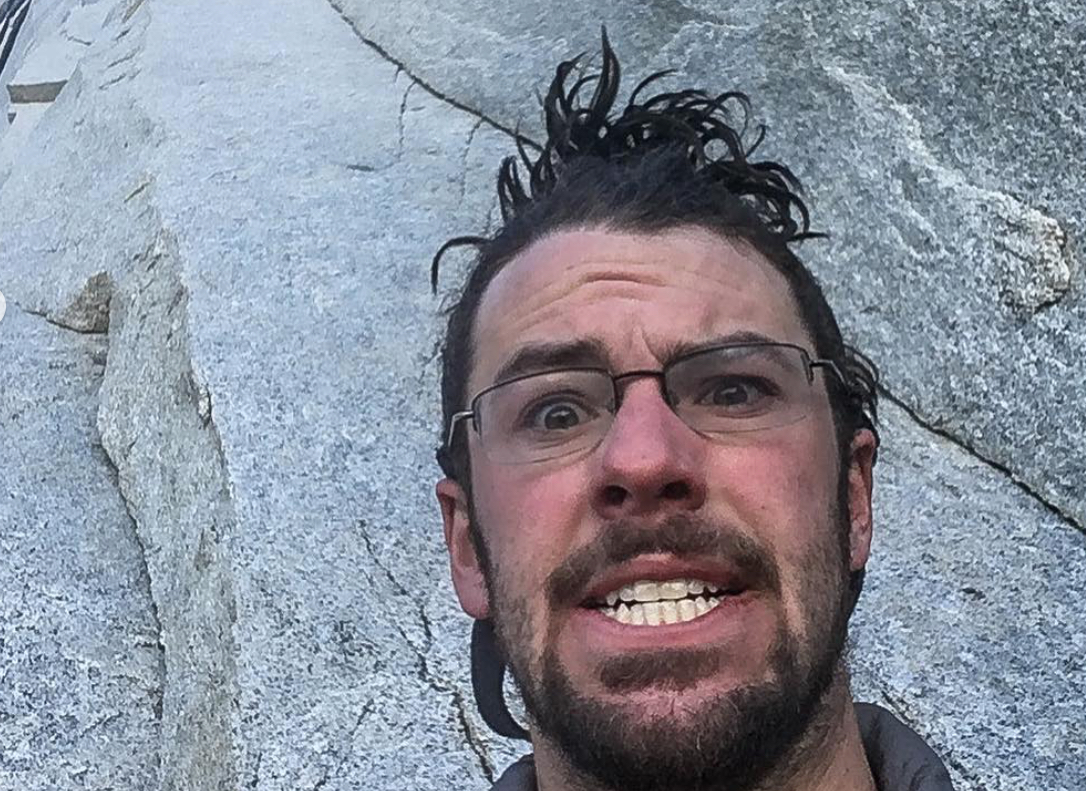Podcast: Play in new window | Download
If I told you a climber from California had free soloed three major formations in Patagonia—not only free soloing up them, but also free soloing down them, without using a rope to rappel—you’d be forgiven for thinking that I was talking about Alex Honnold.
In fact, that climber was Jim Reynolds, a guy I had never really heard too much about before now.
He’s a 25-year-old climber hailing from Weaverville, California. He works on the Yosemite Search and Rescue (YOSAR) team in the summer, wears rectangular frameless glasses, plays renditions of Slayer on a mandolin, and considers mental training to be wielding a wooden samurai katana in the sun-dappled light of a ponderosa forest behind the YOSAR campsite.
Last month Jim made a big statement in Patagonia. He free soled up, and down, Fitz Roy, St. Exupery, and Rafael-Juarez. He did so without any fanfare, Insta-spray, or Oscar trophy waiting for him back home.
Pretty bad ass.
I got to speak to Jim shortly after his groundbreaking ascents, and break this story with an article I wrote for National Geographic. In this episode, Chris and I go through some of the details of Jim’s incredible ascents, and naturally we got into a discussion about Free Solo, the now Oscar-winning documentary film.
But it is interesting to consider if the prominence of the film might influence our sport. Will the film be that extra jolt of motivation that pushes young, impressionable minds to go through with their crazy ideas?
Or are these artists of the mountains the free-thinking spirits they make themselves out to be, and are we the ones whose weak minds are sentencing us to lives of mediocrity and sin?
This is Andrew Bisharat, and you’re listening to The RunOut.

4 responses to “RunOut #20: Jim Reynolds’ Free Solo on Fitzroy Changes Everything/Nothing”
Theres a changing corners on Astroman? I thought it was the nose?
Yep. 2nd or 3rd to last pitch is known as the changing corners. 5.11. Also, a “changing corner” is a common crack climbing feature. Just like it sounds, one might be in a right facing corner and as the corner dwindles to an apex, a left facing corner starts to form as the crack continues. Often the transition from one corner to the next is very difficult because your body position has to change completely and also reaching around to jam the opposite corner can be very hard.
From from Mountain Project. “P8. Changing corners. Fantastic. 20 or 30′ of easy ground bring you to mantle (11a) which is one of those moves that you can sail through one time only to flail the next time. There is an old, questionable bolt here which can be backed up w/ something like a yellow Alien; if you’re really motivated top rope pro (#2 Rock?) can be had. After the mantle, some more easy ground takes you to the base of the corner, right-facing at this point, which is ascended until things get too hard and you step left around the arete onto slabby face which is followed for a few feet until you start wondering about your last pro, out of sight, below you around the arete. BETA ALERT: reach blindly back right and place something (2 Friend, 1 Camalot?) in the original corner. Eventually you rejoin the corner, now facing left, for a long stretch of fingerlocks and stemming (small nuts). (The face passage is sensational but can be avoided by staying in the corner (11d, better gear)). After the corner ends, continue in easier, wider cracks (good to have a 3 Camalot and a 4 Friend) until a stance in the vicinity of a couple of fixed pins. There are several belay options before this point but its good to stretch it to here in order to be able to link the next two pitches. 11b 150′.”
Thanks for the thorough reply- it was interesting to read!